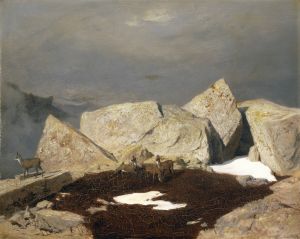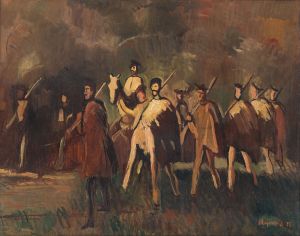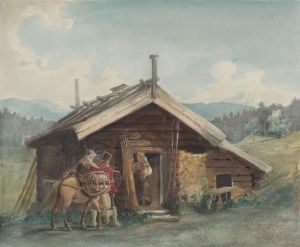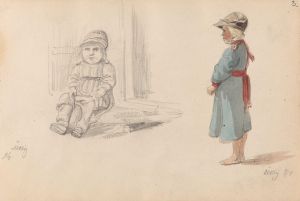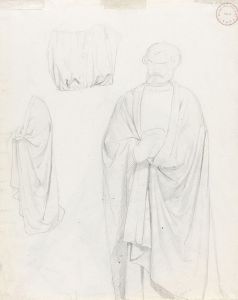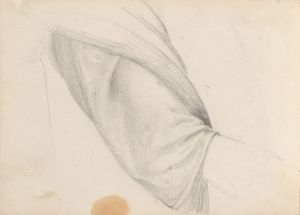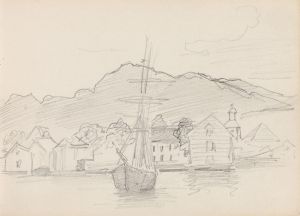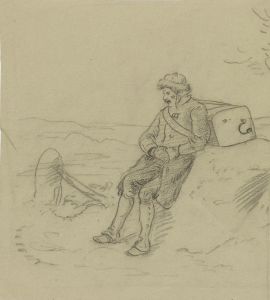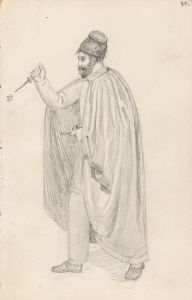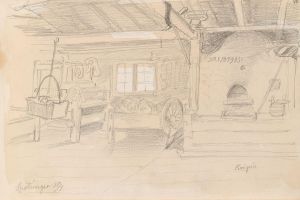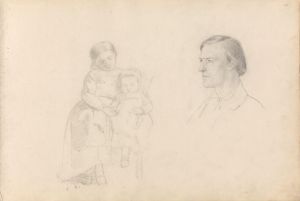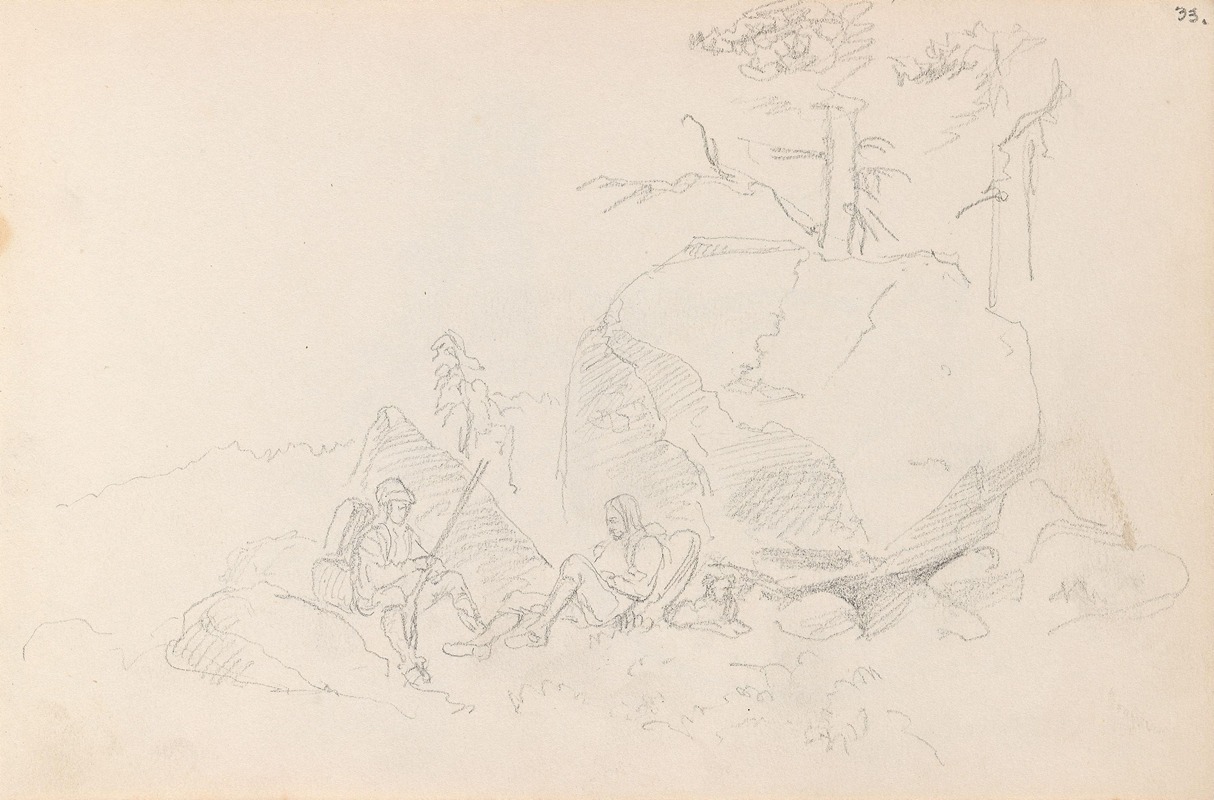
To mannsfigurer som raster ved en klippe
A hand-painted replica of Adolph Tidemand’s masterpiece To mannsfigurer som raster ved en klippe, meticulously crafted by professional artists to capture the true essence of the original. Each piece is created with museum-quality canvas and rare mineral pigments, carefully painted by experienced artists with delicate brushstrokes and rich, layered colors to perfectly recreate the texture of the original artwork. Unlike machine-printed reproductions, this hand-painted version brings the painting to life, infused with the artist’s emotions and skill in every stroke. Whether for personal collection or home decoration, it instantly elevates the artistic atmosphere of any space.
Adolph Tidemand was a prominent Norwegian painter in the 19th century, known for his detailed and evocative depictions of Norwegian folk life and traditions. One of his works, "To mannsfigurer som raster ved en klippe" (translated as "Two Male Figures Resting by a Cliff"), exemplifies his focus on rural themes and his ability to capture the essence of Norwegian culture.
Adolph Tidemand was born on August 14, 1814, in Mandal, Norway. He studied art in Copenhagen and later in Düsseldorf, where he became associated with the Düsseldorf school of painting. This movement was characterized by its detailed and realistic portrayal of subjects, often with a focus on historical and genre scenes. Tidemand's work often depicted the everyday life of Norwegian people, their customs, and their environment, which played a significant role in shaping the national identity of Norway during a time of growing nationalism.
"To mannsfigurer som raster ved en klippe" is a painting that fits within Tidemand's broader oeuvre, which frequently explored themes of rural life and the natural landscape of Norway. While specific details about this particular painting are scarce, it can be inferred from the title that the work likely features two male figures taking a rest by a cliff. This setting is typical of Tidemand's interest in the Norwegian landscape, which he often used as a backdrop to highlight the connection between people and their environment.
Tidemand's paintings are celebrated for their meticulous attention to detail and their ability to convey a narrative. His works often include elements that tell a story about the lives and traditions of the people he depicted. Although "To mannsfigurer som raster ved en klippe" is not as widely discussed as some of his other works, such as "Haugianerne" or "Brudeferden i Hardanger," it nonetheless reflects his consistent interest in portraying the dignity and simplicity of rural Norwegian life.
Throughout his career, Tidemand collaborated with other artists, most notably Hans Gude, with whom he created several famous works. Their joint painting "Brudeferden i Hardanger" is one of the most iconic images in Norwegian art, combining Tidemand's skill in figure painting with Gude's expertise in landscapes. This collaboration highlights Tidemand's ability to work within a broader artistic community while maintaining his unique focus on Norwegian themes.
Adolph Tidemand's contribution to Norwegian art is significant, as he helped to document and preserve the cultural heritage of Norway through his paintings. His works remain an important part of Norway's national art collection and continue to be studied and appreciated for their historical and cultural value.
In summary, while specific information about "To mannsfigurer som raster ved en klippe" is limited, it is representative of Adolph Tidemand's broader artistic focus on Norwegian rural life and landscapes. His paintings are a testament to his skill in capturing the essence of Norwegian culture and his role in the development of a national artistic identity during the 19th century.





